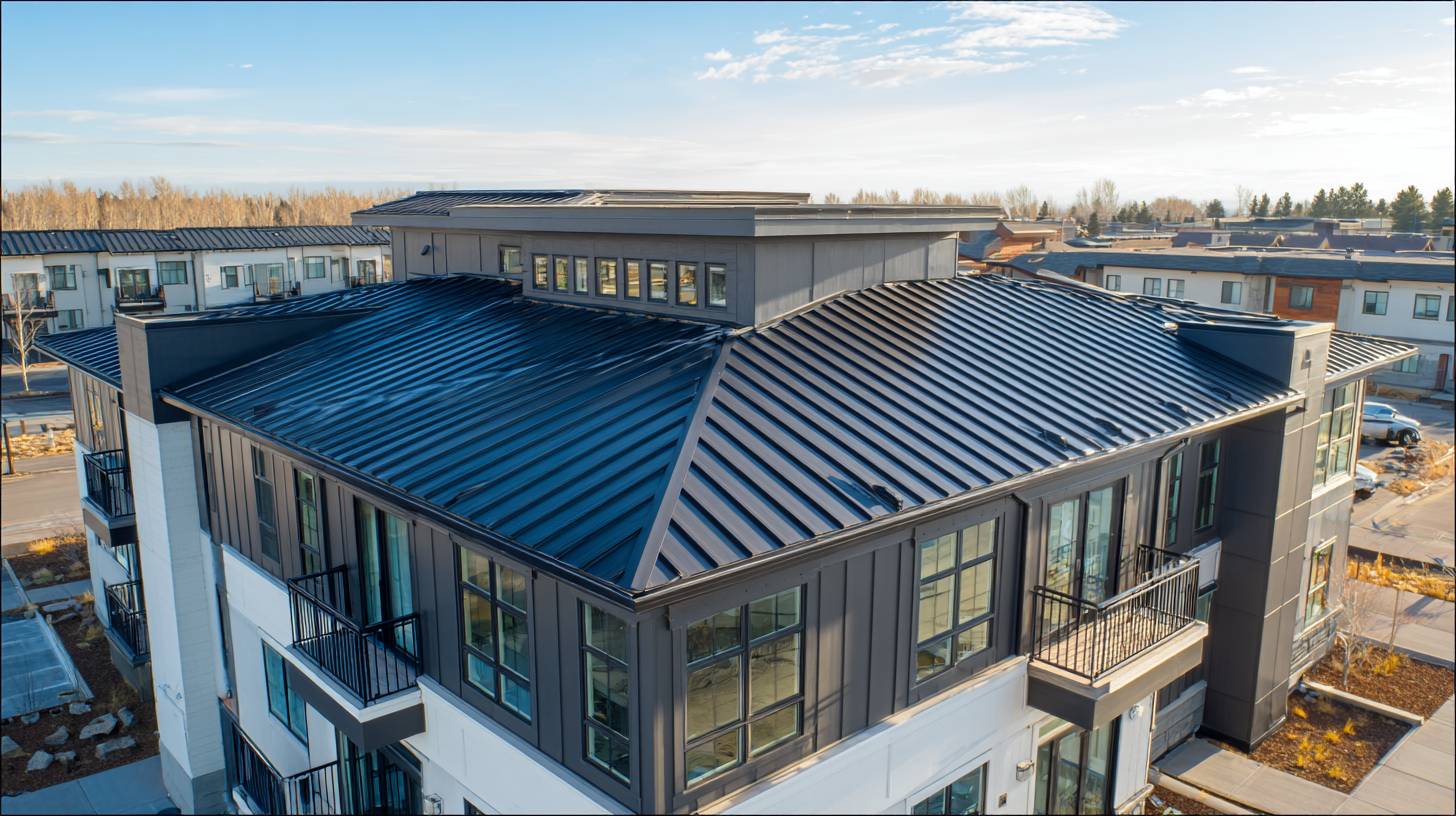Table of Contents [hide]
Roofs are built to protect, but not all climates test them the same way. That’s where all-weather roofing and construction shines: pairing roofing services with broader envelope work, so the whole system stands up to wind, water, snow, heat, and UV.
Whether you’re planning a new roof installation, scheduling roof leak repair, or upgrading to energy-efficient assemblies, a qualified roofing company should match solutions to your regional conditions.
Roofing in Coastal and Hurricane-Prone Regions
Storm-exposed coasts face high winds, wind-driven rain, and salt corrosion. Expect premium assemblies (uplift ratings, corrosion-resistant fasteners, sealed roof decks) and potential cost adders versus inland work.
For steep-slope roofs, specify shingles with appropriateASTM D7158/D3161 wind classifications; in wildfire-exposed areas, use a Class A roof assembly tested to ASTM E108/UL 790.
- Single-ply roofing systems (low-slope commercial roofing): TPO (thermoplastic polyolefin), PVC, and EPDM (ethylene-propylene-diene monomer) dominate for flat roofs; select assemblies with documented wind-uplift performance, and consider reflective membranes to help control cooling loads.
- Modified bitumen & membrane roofing: Flexible, durable options for membrane roofing; pair with a sealed roof deck and robust attachment/edge metal in hurricane regions to reduce water intrusion if the cover blows off.
- Waterproofing systems & roof accessories: Upgrade flashings, curbs, scuppers/drains, and consider protected surfaces (walk pads/ballasted pavers where appropriate) to manage wind-driven rain and maintenance traffic.
- Roof leak repairs: Rapid dry-in (temporary) followed by code-compliant permanent repair; document materials and ratings on the work order for insurance and future maintenance.
Pairing roofing services with targeted construction repairs ensures not just the roof, but also siding interfaces, gutters, and air barrier systems are reinforced against storm events.
Roofing in Snow and Ice Regions
Across the colder Northeast/Upper Midwest and mountain climates, freeze-thaw cycles and snow loads drive different priorities.
Asphalt shingles paired withan ice-barrier membrane at eaves help resist ice-dam back-ups where the code requires it (jurisdictions with a history of ice at eaves). Combine that with balanced attic ventilation and upgraded roof and deck insulation to limit meltwater and moisture.
- Asphalt shingles with ice/water shield: Install eave membranes and meticulous flashing; specify shingles with wind classifications suitable for winter storms.
- EPDM rubber roofing (low-slope): A durable rubber roof option for cold climates; follow cold-weather installation guidance and ensure vapor/condensation control in the assembly.
- Roof pavers & panels (where designed): Use as wear protection/ballast on flat commercial roofing; verify structural capacity and snow-load design before adding weight.
- Roof inspections: Schedule seasonal roof inspections to catch minor roof leaks before freeze-thaw cycles amplify damage; document each inspection period for warranty/insurance.
Here, residential roofing often coincides with home-performance upgrades: air-sealing the ceiling plane and bringing attic insulation toENERGY STAR recommended levels (commonly R-49 to R-60 in colder zones) improves durability and comfort.
Roofing in Hot and Dry Regions
Relentless heat and UV demand all-weather roofing and construction choices that manage solar gain and thermal movement. In hot-dry interiors and deserts, prioritize cool-roof surfaces with documented reflectance and solar reflectance index (SRI), plus assemblies that tolerate expansion/contraction.
As a cost lens, a full new roof replacement nationally averages about $30.7k for architectural asphalt and $49.9k for standing-seam metal; hot, urban markets can price higher for reflective finishes and logistics, while inland/rural installs may trend lower.
- Urethane roof coatings & fluid-applied waterproofing: Aliphatic polyurethane topcoats and other reflective coatings can cut roof surface temps and extend service life when specified by tested, aged reflectance/SRI values.
- ENERGY STAR/CRRC-listed single-ply systems (TPO/PVC): High-reflectance single-ply roofing systems on low-slope roofs help reduce cooling loads.
- Roof and deck insulation: Pair reflective membranes with adequate insulation to limit heat flow and stabilize interiors.
- Rubber roof systems (EPDM): Flexible membranes accommodate thermal movement; choose color/assembly appropriate to climate and energy goals.
These upgrades often blend roofing services with broader envelope work, insulation, and air barrier systems todeliver energy-efficient performance across residential and commercial roofing. Always confirm local code and incentive requirements.
Roofing in Humid and Mixed-Climate Regions
Humid and marine/mixed zones battle year-round moisture, wind-driven rain, and storm runoff—so durability and water management drive selections and cost.
- Asphalt shingles or roof restorations: Widely used in residential roofing for value-to-durability; specify wind ratings appropriate to local design winds.
- Gutter installation & roof accessories: Sized drains, scuppers, and diverters protect cladding and foundations during intense rainfall.
- Air barrier & waterproofing systems: Reinforce the building envelope to curb bulk water and interior humidity.
- Proactive roof repair services: Routine roof inspections and small roof leak repairs prevent larger tear-offs; pair with attic air-sealing/venting to control condensation.
Here, marketplace trust matters as much as materials: review BBB Business Profiles/BBB accreditation and look for registered manufacturer system warranties (e.g., System Plus, Silver Pledge) offered through credentialed installers.
Why Warranties and Safety Efforts Matter Everywhere
Across climates, reputable contractors install to manufacturer specs so your roof system qualifies for coverage, such as material, system, and workmanship protections, which vary by program and installer credential.
Many brands offer enhanced “system” warranties when compatible components are used and the job is registered. Read terms for wind/impact/fire requirements (e.g., UL 2218 impact, ASTM D7158/D3161 wind, UL 790/ASTM E108 Class A fire assemblies) because listings and correct installation are prerequisites for warranty validity.
Safety is non-negotiable. Professional crews manage site risks, protect property, and document the work, from estimate to completion, so homeowners get transparent scopes, clear warranties, and reliable outcomes for both roof replacements and new roof installations. Verify local code/HOA rules and federal listings before you commit.
FAQs About All-Weather Roofing
What is roofing and construction for different weather?
It’s an integrated approach that pairs roofing services with insulation, air- and water-barrier work so the whole building envelope performs in any climate.
For cost context on a full new roof replacement, 2024 national averages were about $30,680 for architectural asphalt shingles and $49,928 for standing-seam metal; coastal/urban jobs often price higher due to labor, logistics, and code-driven assemblies, while inland/rural installs may trend lower.
Which roofing systems last longest in different climates?
Match the system to hazards and roof type: in hurricane/wind zones, use shingles with listed wind classifications (ASTM D7158/D3161) or appropriate low-slope membranes for commercial roofing
In wildfire-exposed areas, insist on a Class A roof assembly (tested to UL 790/ASTM E108); in hail regions, look for UL 2218 Class 4 impact-rated shingles; in hot-dry zones, prioritize cool-roof products with a rated solar reflectance index (SRI); in cold climates, asphalt shingles with eave ice-barrier (where required) plus balanced ventilation.
Do I need regular roof inspections?
Yes. Seasonal checks (or after major storms) document roof condition, catch small roof leaks early, and help preserve warranty coverage; NRCA guidance and many manufacturer programs expect documented maintenance for eligibility. Review your warranty terms. Some system warranties explicitly require periodic inspections and recordkeeping.
Find a Reliable All-Weather Roofer Near You
Mr. Remodel helps you hire with confidence. Share a few project details, whether you need roof repair or a full new roof, and we’ll connect you with vetted, licensed, and insured contractors who understand all-weather roofing and construction for your climate and home.
Our matches account for material preferences, energy-efficient options, warranty eligibility, and the unique demands of your region. You’ll receive no-obligation quotes with clear scopes, timelines, and warranty terms so you can compare apples-to-apples and pick the best value.





